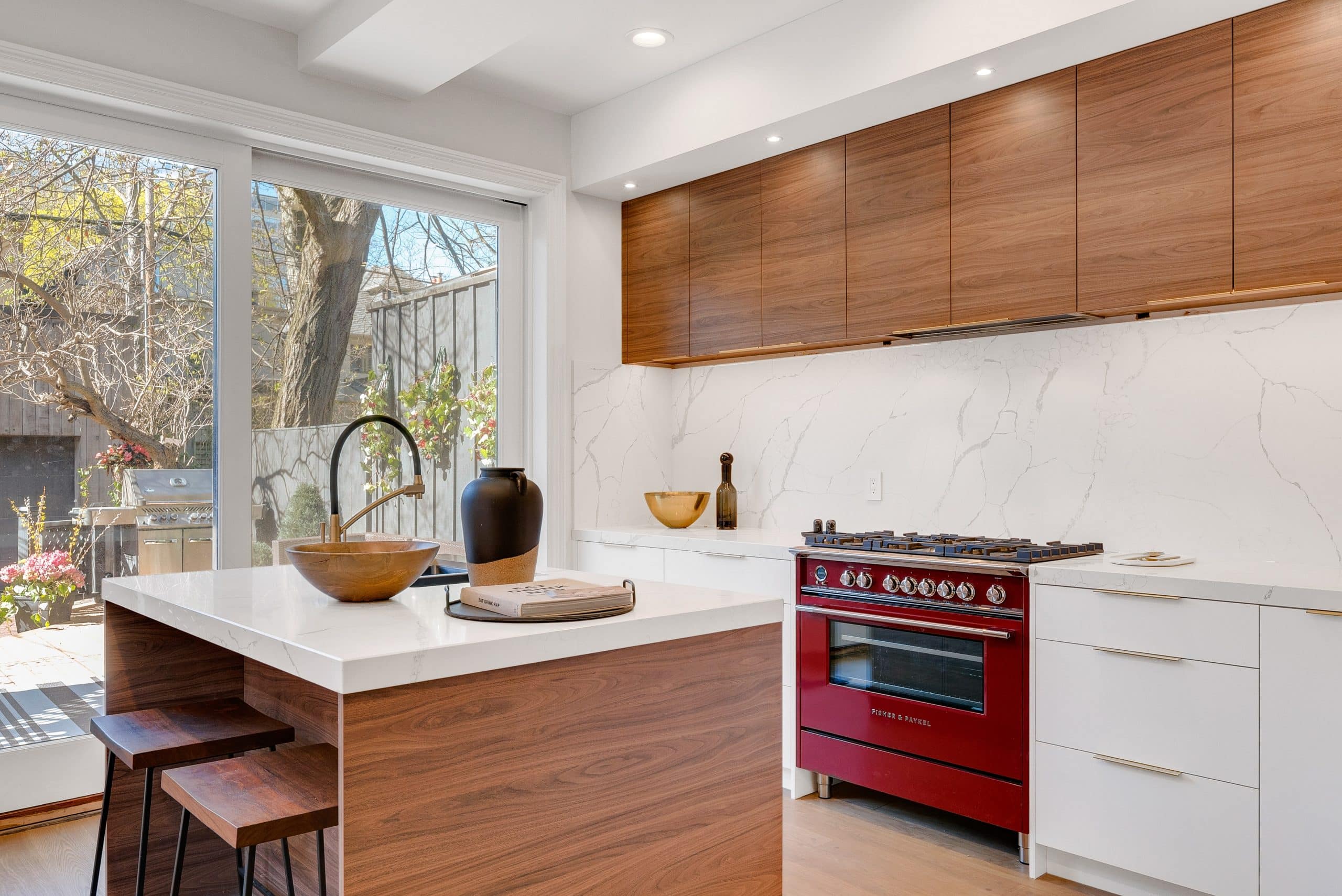
Minimalist kitchen design: simplifying your culinary space
Embracing minimalism has become a popular trend in recent years, and it’s much more than just a design aesthetic. It’s a lifestyle choice that encourages reducing clutter, focusing on the essentials, and simplifying your surroundings. Your kitchen is the perfect place to start your journey towards minimalism. A minimalist kitchen design can help streamline your cooking processes, reduce clutter, and create an elegant, functional space that you will love to spend time in.
Embracing Minimalism in the Kitchen
Minimalism isn’t about stripping your kitchen bare and living with the absolute least. It is about making mindful choices to keep only what’s necessary and functional, thus creating a clutter-free, clean, and efficient space.
A lire aussi : What are the key features of a modern rustic home design?
When it comes to embracing minimalism in the kitchen, consider your cooking habits, storage needs, and the items you use most frequently. What are the essential appliances and utensils you frequently use? Could you function well with fewer items? These questions will aid in identifying redundant items, helping to declutter and streamline your culinary space.
Space Utilization
One of the key principles of minimalism is optimal utilization of space. This principle is particularly crucial in kitchen design, where effective space utilization can make all the difference between a chaotic, cluttered kitchen and a clean, functional one.
En parallèle : What are the key elements of coastal home design?
Start by assessing your cabinets and drawers. Are they filled with unnecessary items, or are they efficient storage spaces for your cooking utensils and appliances? Reorganizing your cabinets and drawers, while keeping only the essentials, frees up space and reduces visual clutter. Consider installing pull-out drawers and multi-tiered shelves for efficient storage, and creating designated spaces for specific items to keep everything organized.
Selecting Essential Appliances
Appliances are integral to any kitchen, but a minimalist kitchen only houses the ones crucial to your cooking requirements. Consider your cooking habits and the appliances you use regularly. If an appliance isn’t being used, it’s probably taking up unnecessary space.
Stick to appliances that serve multiple functions. For example, a high-powered blender can also act as a food processor, reducing the need for two separate appliances. A minimalist design will have clean countertops, free from cluttered appliances, enhancing your kitchen’s aesthetic appeal.
Minimalist Storage for Cooking Utensils
To maintain a minimalist kitchen, it’s essential to properly store your cooking utensils. When every item has its designated place, it’s easier to keep the kitchen clean and clutter-free.
Consider using drawer dividers or utensil holders to organize your cutlery neatly. Hanging racks can be utilized to store pots and pans, freeing up cabinet space. Wall-mounted magnetic strips are also a great space-saving solution for knives and other metallic utensils. Remember, the goal is to create a system that is easy to maintain and aids in your cooking process.
Clean and Clutter-Free Countertops
A hallmark of minimalism is clean, clutter-free spaces. This is particularly important in the kitchen, where clutter can easily build up. Keeping your countertops free of unnecessary items not only enhances the visual appeal of your kitchen but also makes cooking and cleaning easier.
A minimalistic approach would be to store away small appliances when not in use, keep only essential items on the countertops, and regularly clear out any non-essential items. This will maintain a clean, free space for you to enjoy your cooking.
Choosing Minimalist Design Elements
A minimalist kitchen design is not just about decluttering; it’s also about incorporating clean lines, neutral colors, and functional design elements. The aesthetics of your kitchen should reflect the minimalist ethos of simplicity and functionality.
Choose simple designs for your cabinets, with clean lines and subtle colors. Opt for sleek, modern appliances that blend seamlessly into your kitchen’s design. Consider using materials like stainless steel, glass, or natural wood, which add a touch of elegance without overpowering the space. The goal is to create a kitchen where every design element serves a purpose, and nothing is superfluous.
Remember, the journey towards achieving a minimalist kitchen design is about making conscious decisions to simplify your culinary space. By decluttering, reorganizing, and focusing on the essentials, you will create a kitchen that is not only aesthetically pleasing but also functional and efficient. The principles of minimalism will not only simplify your kitchen but also your cooking processes, making your culinary journey more enjoyable.
Adopting High-Quality Materials for a Minimalist Kitchen
Adopting a minimalist kitchen design doesn’t imply the need to compromise on the quality of your kitchen essentials. The minimalist ethos of "less is more" can be applied even to the materials that you use in your kitchen. High-quality materials are not just durable but also add a sense of refined simplicity to your culinary space.
When selecting materials for your minimalist kitchen, consider their functionality. Sturdy materials such as stainless steel or cast iron can be a great choice for pots and pans, as they are durable and easy to maintain. For countertops, materials like marble or quartz are not only aesthetically pleasing but also resilient and easy to clean.
Moreover, keep in mind that the color and texture of the materials should align with your minimalist design. Neutral shades like white, beige, or gray can enhance the clean lines and simplicity of your kitchen. Similarly, matte finishes can add a touch of sophistication without drawing excessive attention.
High-quality materials can simultaneously serve as both functional elements and design features in your kitchen. For instance, a stainless-steel countertop can provide a durable surface for your cooking while also adding a sleek, modern touch to your space.
Remember, the key to a successful minimalist kitchen design lies in the balance between functionality and aesthetics. By selecting high-quality materials that serve both these aspects, you are one step closer to achieving your minimalist kitchen.
The Impact of Minimalist Kitchen Design
Embracing a minimalist kitchen design goes beyond creating a stylish, clutter-free space. It fundamentally changes your interaction with your kitchen, making it a more functional and enjoyable space.
Not only does it make your kitchen visually appealing, but it also enhances your culinary experiences. A well-organized kitchen with only the essentials reduces the time and effort required to prepare meals. Everything you need is within reach without the hassle of navigating through cluttered drawers or cabinets.
Furthermore, a minimalist kitchen may even inspire you to adopt a healthier lifestyle. With a clutter-free environment, you may find yourself more motivated to cook homemade meals, experiment with new recipes, or even invite friends over for a dinner party.
Lastly, the principles of minimalism can be extended beyond your kitchen to other areas of your home. By simplifying your space, you can create a serene, distraction-free environment that promotes focus and relaxation.
In conclusion, the journey towards a minimalist kitchen design is not just about decluttering your space or selecting the right appliances. It’s a lifestyle choice that influences not only the aesthetics of your kitchen but also your culinary habits and overall lifestyle. By focusing on the essentials, reducing clutter, and adopting clean lines, you create a space that is efficient, functional, and ultimately, a joy to cook in.
